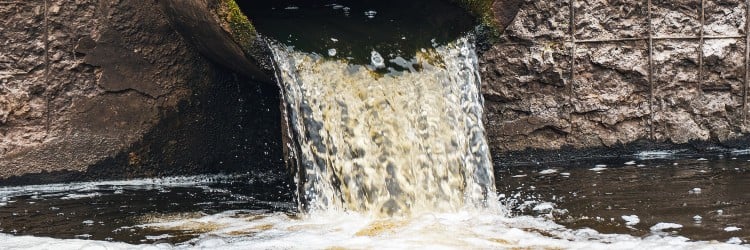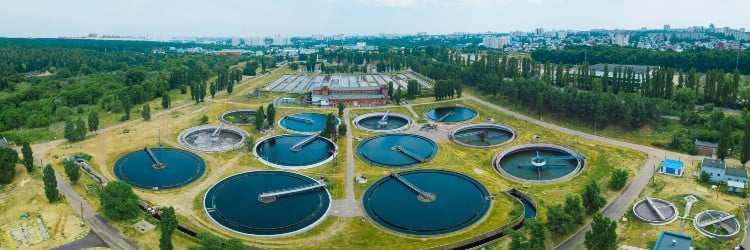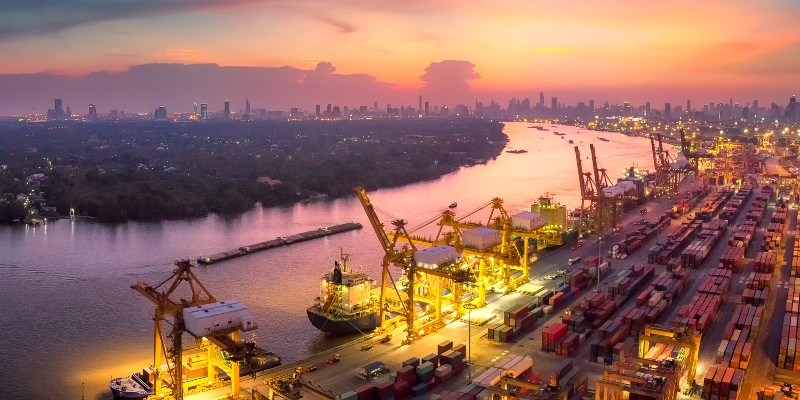Direct releases of active pharmaceutical ingredients (APIs) at pharmaceutical production sites account for only a fraction of total API pollution but have an outsize environmental impact. Due to high API concentrations, direct releases can have significant local impacts on water quality and health if these discharges are not adequately treated.
Over the past two decades, API production has become increasingly geographically concentrated in India and China. That concentration in activity potentially enhances environmental impact, thus exposing the pharmaceutical sector to increased reputational risks. Many companies are already taking action—such as setting water-related targets, auditing suppliers, promoting responsible wastewater management, and adopting standards such as the PSCI and the Antibiotic Manufacturing Standard—to reduce API discharges and improve oversight across their global operations.
This article examines how pharmaceutical companies can enhance their water stewardship efforts to mitigate risks associated with direct API releases within their supply chain.
Direct releases at API manufacturing sites can cause multipronged damage, but can be controlled at source
Active pharmaceutical ingredients (APIs) are the fundamental components used in the production of pharmaceutical products. APIs are released into the environment (to become “pharmaceuticals in the environment”, or PiE) via three main pathways: (i) from the patient population both human and animal via ingested and excreted medicines, (ii) improper disposal of unused medicines, and (iii) from releases into local waterways at or near pharmaceutical production sites.
Even though patient excretion of drugs accounts for the vast majority of pharmaceuticals in the environment (~88 percent of the total load), and improper disposal of unused medicines contributes about 10 percent, direct releases from pharmaceutical manufacturing (point-source pollution) contributes a non-negligible 2 percent.
Focusing on the 2 percent seems counterintuitive. However, this “direct release” from manufacturing sites can contain high concentrations of APIs, leading to local “hotspots” of contamination in local waterways and causing immediate ecotoxicological effects. These hotspots have also been related to antibiotic resistance in the environment, which poses a significant human health risk, claiming the lives of 1.27 million people each year1. The 2 percent, therefore, has outsized importance due to its intense localized impacts. In contrast to controlling the discharge of pharmaceuticals from patients, it is possible and relatively straightforward to control these concentrations at source.

Geographical shifts in API production have exposed the pharma supply chain to increased water scarcity and quality risks
The primary manufacturing of APIs is increasingly being outsourced to specialized external facilities. The largest pharmaceutical companies focus on generating new biologic APIs and the formulation and production of finished pharmaceutical products, using supplied APIs,. In many cases the formulation, dosage form and packaging are outsourced as well.
Historically, the primary manufacturing of APIs was concentrated in Europe and North America; however, over the past two decades, this trend has shifted towards India and China. This geographical redistribution has implications for water-related risks and impacts across the pharmaceutical supply chain.
Data from the US Pharmacopeia indicate that 25 years ago, approximately 42 percent of APIs were produced in Europe, 19 percent in India, 18 percent in the US, and China accounted for about 5 percent. Today, these figures have dramatically shifted: API production in Europe has decreased to roughly 10 percent, while the US has dropped to 4 percent. Conversely, India’s share has expanded from 19 percent to over 50 percent, while China's share has increased from 5 percent to approximately 32 percent.
This geographical shift in API manufacturing has coincided with a move into regions where water scarcity is more acute. For example, currently, about 81 percent of basins in India experience medium to extremely high water stress, compared to 40 percent in Europe and 56 percent in North America. Site-specific data would be required to fully assess the impact on the sector; nevertheless, the move highlights the potential for the pharmaceutical supply chain to be exposed to increased risks related to water supply reliability and operational continuity.
A similar picture emerges when looking at water quality and wastewater treatment. The United Nations’ Sustainable Development Goals (SDGs) program tracks the percentage of wastewater in different countries that is safely treated through efforts to reduce pollution, eliminate dumping, and minimize the release of hazardous chemicals and materials. In European countries, 75 to 100 percent of wastewater is safely treated, whereas the percentage in the United States is close to 100. In contrast, India and China safely treat 21 percent and 62 percent of their wastewater, respectively. However, SDG measurement focuses only on secondary treatment, and global monitoring of Active Pharmaceutical Ingredients (APIs) in wastewater is currently limited to specific research projects and pilot studies, with no country yet implementing routine, nationwide surveillance.
With these geographical shifts, primary API manufacturing is now concentrated in specific regions, and data is emerging that these regions are associated with increased concentrations of PiE. For example, studies in China have linked higher levels of API contamination to specific manufacturing locations, and potential downstream pollution from these manufacturing plants has been observed.
In India, APIs have been detected at high concentrations in surface waters near drug manufacturing hubs. In the Patancheru–Bollaram industrial zone near Hyderabad, India—one of the world’s major hubs for bulk pharmaceutical production—a centralized wastewater treatment facility was found to be releasing effluent containing antibiotics at highly elevated levels in the treated discharge, contributing to antibiotic resistance. Seven other pharmaceutical compounds were present in similarly elevated concentrations. Additionally, groundwater wells in nearby villages showed high levels of multiple active pharmaceutical ingredients (APIs), likely due to contamination from seepage.
In almost all geographies, local effluent discharge permits do not have limits for API; they have only total toxic load limits. However, potential effects of PiE on endocrine modulation and the development of antimicrobial resistance are not addressed by toxicity load, and the “predicted no-effect concentrations” (PNEC) needed to prevent these effects are nascent and, in some cases, not yet fully developed.
Most effluent permits do not mandate the monitoring of APIs. Indeed, the environmental risk assessments (ERAs) conducted by the sector for marketing authorization applications for new drugs require the accurate prediction of potential API release concentrations (the “predicted environmental concentration” PEC), based on the physical setting (i.e., flow rate) in the receiving environment and on industrial hygiene measures. Those predicted concentrations should be less than the PNEC.
This risk-based approach to managing PiE, in which resultant environmental concentrations are estimated, is also used in the Antibiotic Manufacturing Standard (AMS), which covers a broader range of APIs than only antibiotics. In addition, pharmaceutical companies participate in broader efforts to address PiE through collaboration with industry associations. The Eco-Pharmaco-Stewardship (EPS)2 initiative, developed jointly by EFPIA, Medicines for Europe, and AESGP, takes a life-cycle approach to pharmaceuticals, defining the roles and responsibilities of all stakeholders, including public services, industry, healthcare professionals, and patients.
However, these risk-based approaches to PiE do not account for the geographical concentration of potential API releases and do not mandate direct API monitoring in effluent streams or the environment, nor the comparison of actual concentrations to predicted ones. Additionally, traditional treatment methods, whether on-site or municipal provisions, do not remove APIs from wastewater.
Quaternary treatment, which focuses on the removal of micropollutants, is required on-site or at the municipal wastewater plant treating the site's discharges to prevent APIs from being released. Quaternary treatment is technically feasible and is being promoted in India, with several sites moving towards Zero Liquid Discharge; however, its implementation is not yet widespread. In many cases, it is not mandated by regulation, and knowledge gaps or infrastructure limitations may hinder its adoption.
The potential for water quality impacts associated with primary API manufacturing and the associated risks to incoming water quality in these areas have therefore increased with geographical concentration.
How is the pharmaceutical sector responding to supply chain API challenges?
The pharmaceutical sector generally has well-established and mature water management practices in its direct operations. All ten of the leading pharmaceutical companies (by revenue in 2024) have numerical water-related sustainability targets outlined in their latest sustainability reports, including various combinations of efficiency, reuse, and replenishment targets, as well as commitments to stewardship.
The sector’s leadership in water management is also reflected in its engagement with leading standards. Sites from the pharmaceutical industry represent 9 percent of those certified under the Alliance for Water Stewardship (AWS) standard, positioning the sector just behind agrifood (40 percent combined), consumer goods (20 percent), and technology (14 percent).
ERM’s Water Maturity Assessments, conducted across multiple sectors, also indicate that pharmaceutical companies generally have a higher level of water risk management maturity than industries such as mining, oil and gas, and chemicals.
“It is a sector that is already aware of the importance water plays within its value chain and is already actively taking action to mitigate its impacts on water globally.
These water-related sustainability targets do not, however, include quaternary treatment of wastewater in direct operations for the removal of APIs. Furthermore, water actions (i.e., setting and reporting specific targets) primarily focus on facilities owned and operated by pharmaceutical companies, particularly those in water-scarce areas. Only 50 percent of the top 30 global pharmaceutical companies publicly disclose that they undertake water activities specifically targeted at API manufacturing in their supply chain.
Based on disclosures made to CDP-Water and sustainability reports, activities undertaken in the supply chain include:
(i) numerical water consumption or efficiency targets in supply chain operations;
(ii) requiring suppliers to comply with water-related regulatory requirements; fostering improvement in wastewater management;
(iii) auditing supplier environmental practices and prioritizing those with lower negative impact; and
(iv) encouraging key suppliers to responsibly manage their water use and discharge, particularly in water-stressed areas.
Most notably, the industry created the Pharmaceutical Supply Chain Initiative (PSCI) to align its supply chain to the UN Global Compact. These efforts have advanced significantly over the decades, and PiE is a major focus of the initiative.
In addition to establishing a standard for wastewater management (the Antibiotic Manufacturing Standard, funded by the AMR Industry Alliance, which sets limits related to PNECs for various antibiotics), numerous tools and webinars have been developed and shared to help suppliers learn how to manage wastewater responsibly. Most of the large pharmaceutical companies audit and require their suppliers to meet the PSCI principles, including the responsible handling and treatment of wastewater, as well as the assessment and mitigation of API releases.
The Antibiotic Manufacturing Standard and the ERAs completed for new products apply to the pharmaceutical product across its entire value chain, providing measures to oversee API manufacturing in the supply chain as well as direct operations.

Focus on anti-microbial resistance
Concerns about antimicrobial resistance (AMR) have also triggered an increased focus on discharges containing APIs, and several companies have initiated AMR campaigns aimed at monitoring supply chain effluent for API concentrations more closely.
However, an AMR benchmark study stated that the reporting on individual supplier compliance with discharge limits remains limited. Although several companies have made progress in collaborating with their suppliers to lessen AMR risks, disclosures on the extent of supplier compliance with antibiotic API limits in wastewater are limited in number. One organization in the study disclosed that approximately 86 percent of its over 100 supplier sites adhere to environmental discharge limits, while another reported a compliance rate of 71 percent, compared to 33 percent in 2021.
The ongoing challenge underpinning these disclosures is the absence of regulations globally that establish permitted effluent concentrations for APIs. While the sector is actively working to address AMR through the development of standards, collaboration with the WHO, and certification schemes, such as the one developed with BSI for certification against the Antibiotic Manufacturing Standard, the landscape remains complex.
The science underpinning Predicted No Effect Concentrations (PNEC) for antibiotic resistance is still evolving. Although some PNECs have been proposed (e.g., by Larson), their reproducibility has been questioned, and methodologies for calculating PECs are not well understood. The pharmaceutical industry has made significant progress, but broader adoption and understanding — especially among smaller companies — remains a work in progress.
Companies have included contractual provisions with suppliers that are not always followed. Some countries have begun to require certification to the BSI AMS for the sale of products within their borders. This could level the playing field for companies that do the work compared to those that do not. In this context, signatories to the Industry Roadmap for Progress on Combating Antimicrobial Resistance support a common standard3 for safely manufacturing antibiotics.
The standard includes best practices for minimizing discharges as well as the development of PNECs to support environmental risk assessments. Most signatories participate in the AMR Industry Alliance survey4, covering both their own manufacturing sites and those of their suppliers, to assess progress against the Framework and compliance with PNEC targets.
How can we accelerate progress?
Understanding the potential environmental and health impacts of PiE has been an ongoing effort. API contamination poses a tangible risk to the sector that goes well beyond the direct issue of deteriorating incoming water quality at manufacturing sites. API contamination could also expose pharmaceutical companies to reputational risk or risk of non-compliance with supply chain regulation, such as the European Union’s Corporate Sustainability Due Diligence Directive (CSDDD).
While many pharmaceutical companies have taken meaningful steps to improve oversight of API discharges - through global standards, supplier engagement, and targeted investments - significant challenges remain, and this action needs to accelerate to address rapidly intensifying stakeholder expectations. Regulatory gaps, uneven implementation, and limited transparency continue to hinder broader impact. The following interventions support accelerated action:
1. Some of the leading companies have taken a global approach to understanding risk, combined with a local approach to managing the risk. The sites with the most significant potential impact and locations where water basin risk is most acute are treated as the highest priority. More companies should follow the leaders.
2. At high priority sites, companies can use PSCI Principles (and/or other assessment protocols) to audit sites and ensure responsible handling and treatment of wastewater to prevent API releases. Where needed, investments in advanced controls can limit the release of APIs, and will address the problem at source.
3. Prioritized sites can mitigate API release at the source by advanced wastewater management. Investment in quaternary treatment methods is required to improve API removal in onsite wastewater treatment plants and reduce direct releases. Zero Liquid Discharge is being actively promoted by the Indian government, which not only mitigates API pollution but also supports reduced freshwater reliance for sites operating in water-scarce areas. Encouraging and supporting its implementation is a great step forward for India and could be imitated elsewhere.
4. Leading companies set targets for discharge concentrations at company operations and supply chain sites and enforce these through contractual obligations. Other companies are encouraged to do the same. All companies are encouraged to extend their disclosures to include compliance with these discharge targets.
5. Engage in collective action with local stakeholders to advance improvements by all water users in threatened water basins.
Implementing comprehensive water stewardship programs that extend beyond owned facilities and include priority supply chain partners—leveraging the collective skills and experience of the sector and other stakeholders— would directly support the implementation of the interventions listed above.
1 - Global burden of bacterial antimicrobial resistance in 2019: a systematic analysis, The Lancet, 2022
2 - Eco-Pharmaco-Stewardship (EPS)
3 - AMR-Industry-Alliance-Manufacturing-Standard.pdf
4 - AMRIA_Manufacturing-and-the-environment-FINAL.pdf


